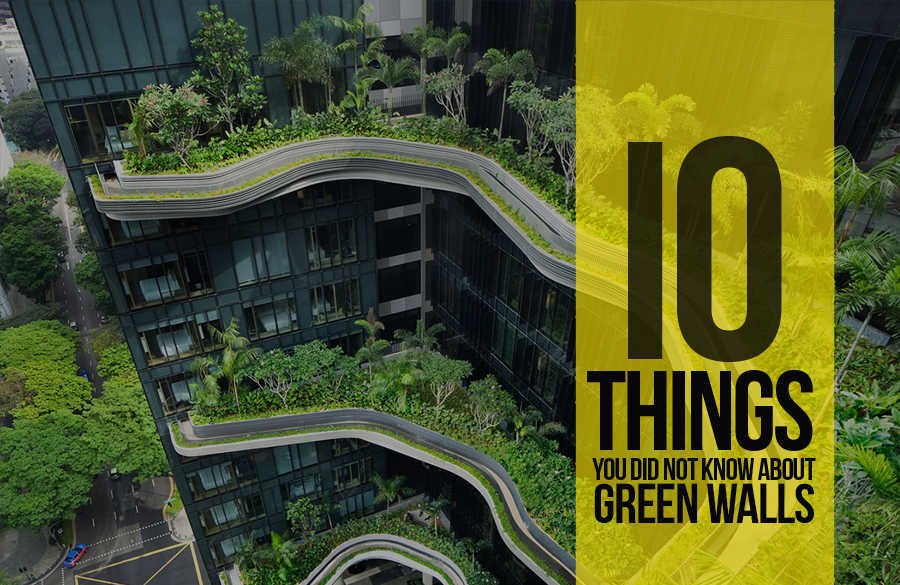Green wall, vertical garden, green facade or living wall—all of those terms refer to the wall covered with living plants that can be installed on both inside and outside walls of the building. This amazing design tool that brings greenery to architecture and combines them, became popular at the end of the twentieth century.
Below you can find 10 things that you did not know about green walls that contain technical details, description of benefits and design aspects but also cite the most interesting realizations of recent times.
1. The Origin of Green Walls Idea
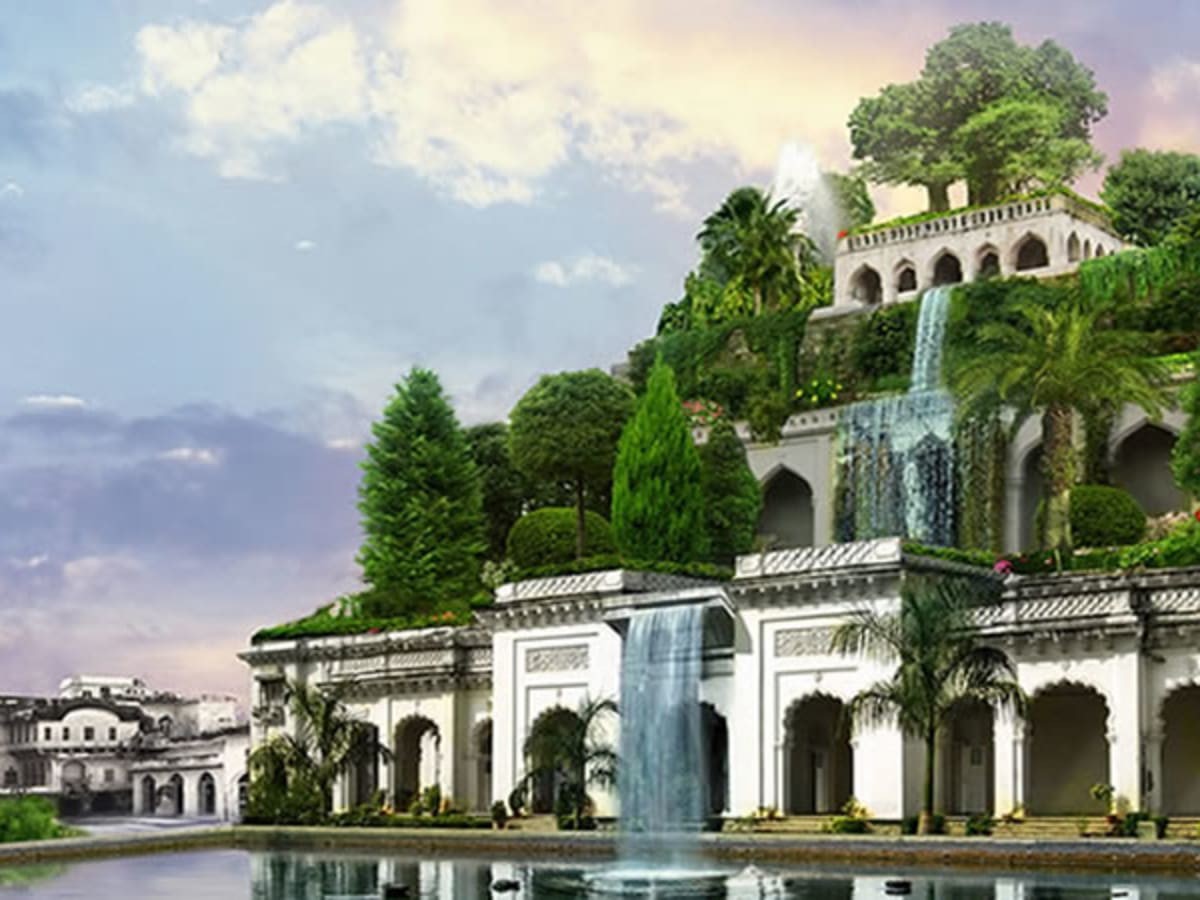
In the past, there were many examples of human activities of decorating buildings with plants such as the Hanging Gardens of Babylon. Thinking about the natural symbiosis of buildings and plants, old castles overgrown with ivy come to mind as well. When moving to modern times it is obligatory to mention Stanley Hart White, the professor of landscape architecture at the American University of Illinois obtained a patent of a structure that enables plants to grow vertically.
His idea was continued by Patrick Blanc, a French botanist who is the inventor of a green wall structure and hydroponic system in the ‘80s. Starting from his first work—Museum of Science and Industry he became an author of many breathtaking realizations.
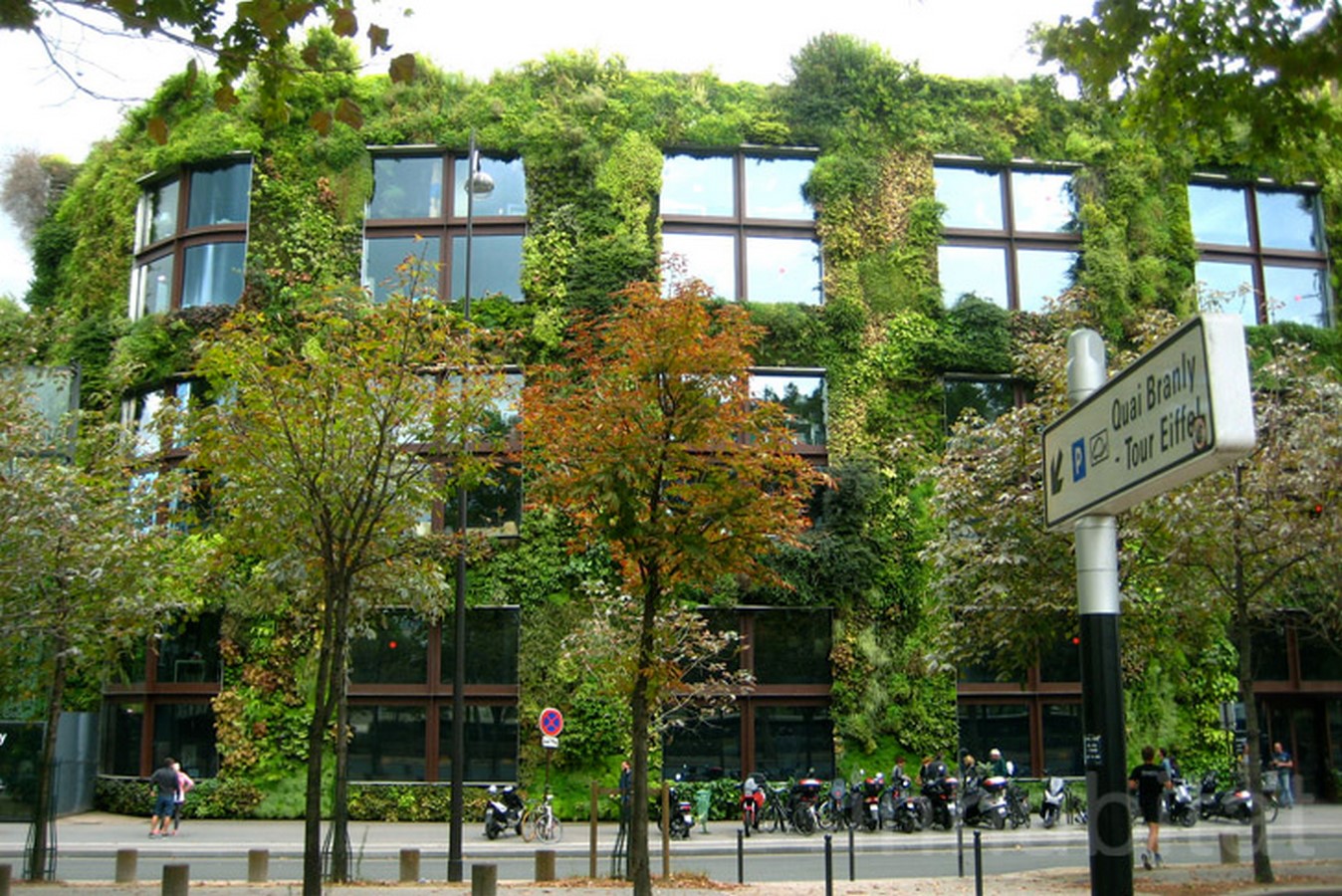
2. Interior Green Wall Is a Tool for Well-Being

Nowadays, the use of living walls in interior design, especially office spaces, is becoming more and more popular, not only for aesthetics but especially for health reasons. Greenery as a stress reducer has a huge impact on human well-being. Plants in the office interior can stimulate users’ concentration and increase their efficiency. The green colour is recommended as a rest for eyes tired with computer working.
[Green walls] They also improve air quality by removing impurities, and more specifically, the absorption of volatile organic compounds (VOCs). So far, researchers have studied 60 species of plants that have shown the ability to remove benzene, formaldehyde, toluene, and sometimes even xylene. (4naturesystem, n.d.).
3. Interior Living Wall Can Be Made of Domestic Plants | Green walls

It is worthy to use domestic plants due to their ease of adaptation and the lowest cost of building and maintaining such a wall. Plants that are often used in interior green walls are spider plants that moisturise the air, Epipremnum aureum with their decorative leaves, and minor ficus pumila. In the presented scheme of modular vertical gardens, plants can grow in standing pots or be sagged in hanging forms. Lighting and irrigation systems provide necessary ingredients to keep the growth, the structure should be also equipped with a remote monitoring unit for controlling the hydration.
A minor requirement for sustaining a green wall life is keeping the temperature of the building at a fair consistent level. If the temperature is ever radically changed, its plant life will most likely suffer. (Stuart, Lauzurique, n.d.).
4. Exterior Green Facade Can Be an Alternative for Gardens

In dense urban structures, green walls can be an answer to the lack of garden spaces. Bringing other benefits on an urban scale, for example, retaining rainwater, they do not diminish the living wall’s positive impact on the building itself.
One of them is the use of plants as a shading wall to protect building users before high temperatures and save on cooling costs. Similar to interior plants, they can filter the air and remove pollution but also reduce the level of noise and the strength of the wind at height.
5. Walls Have to Be Protected Before Damaging by Plants | Green walls

The choice of external plants is challenging due to the need of taking into account factors such as climate or sun exposure. What is more, the method of plant assembly must protect not only the plants but also the building.
Self-clinging plants like English Ivy have commonly been used to create green walls. However, these aggressive plants can damage walls and create difficulties in times of maintenance and plant removal. (Ujueta, 2014) Fortunately, special assembly systems that can minimize the risk come to the rescue by distancing plants from the building.
6. The Tallest Vertical Garden by Patrick Blanc Is Located in Sydney

This 166 metres green facade designed by Patrick Blanc is located on One Central Park, the building designed by Jean Nouvel in Sydney. The wall is characterized by biodiversity and consists of almost two hundred native Australians and almost the same amount of exotic species. The vegetation covers about 50% of the facades.
The most eye-catching elements are rectangle places covered with dense clusters of plants that create amazing compositions of intertwining plants of various colours. In other places, the plants form a translucent coating for the glass walls, freely and unevenly falling along the facade or cover cornices separating individual floors. The whole design of this one of the most impressive green walls creates a very interesting composition, the vivid colour of the plants adds life to the facades.
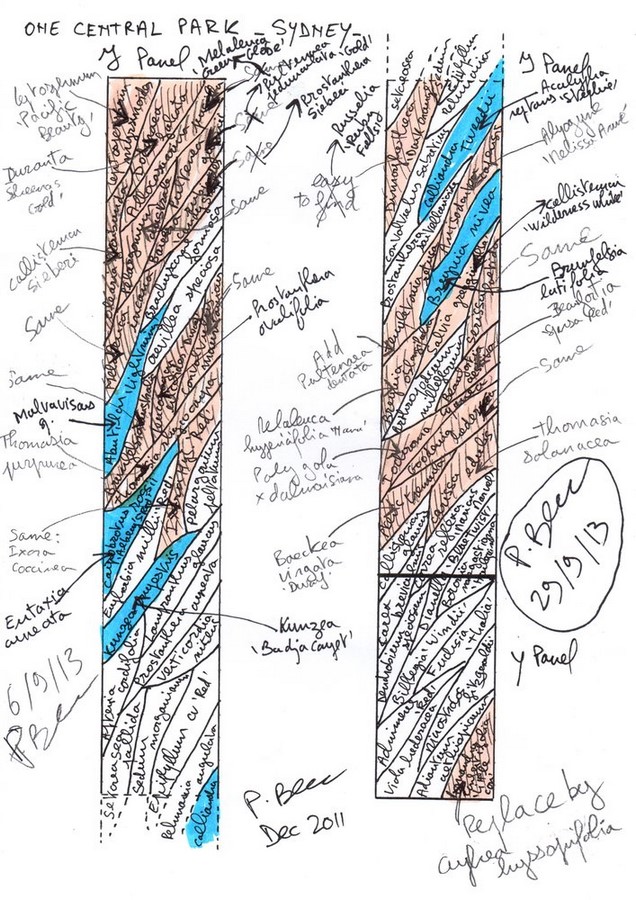
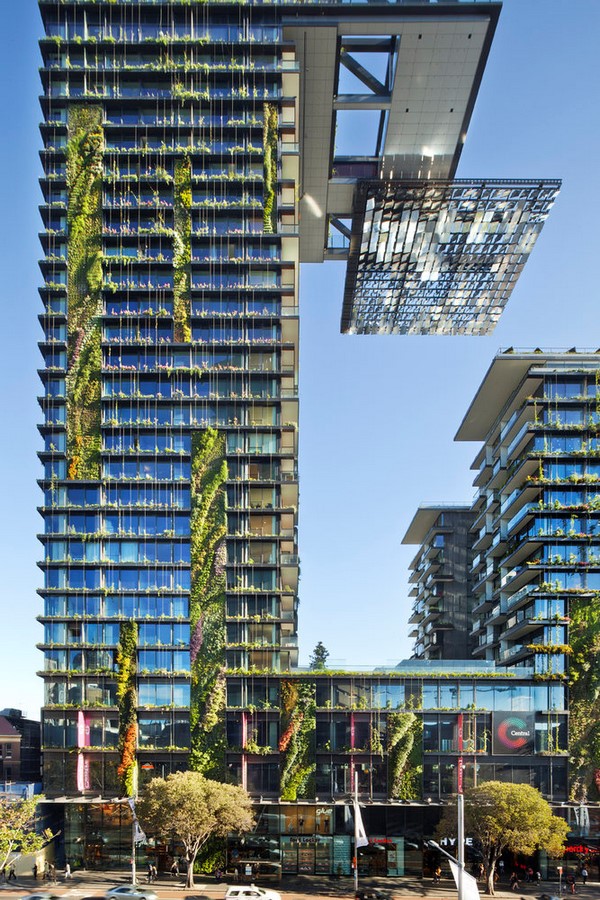
7. Green Facade Can Be Grown on Steel Ropes

Wire ropes are dedicated as climbing supports for plants and amaze with their invisibility on a facade that allows for creating delicate linear plant ornaments. Cables used in green walls need to be properly pre-tensioned and loaded with a specific weight of plants.
The alternative for cables can be a metal grid unfastened on the metal frame or light metal construction based on stands attached to the wall with cables forming rectangular modules. The example of metal cable use can be found also on the facade of One Central Park in Sydney.


8. Singapore Is a Leader in Creative Green Facade Realizations | Green walls

The latest most impressive green wall projects have their place in Singapore. The first design office that stands out with its ingenuity is WOHA Architects with their Oasia Hotel. These 191-metres walls finished with red metal cladding are mostly covered by plants. The other example of a building designed by this office is Parkroyal on Pickering.
In this realization plants are growing on terraces but they create the main element of the buildings’ facade. The Gardens by the Bay designed by Wilkinson Eyre and Grant Associates in Singapore proved that plants can overgrow not only the walls of the buildings but also the surfaces of structures. This project consists of 25 to 50 tree-shaped installations covered with ivy plants climbing over them.


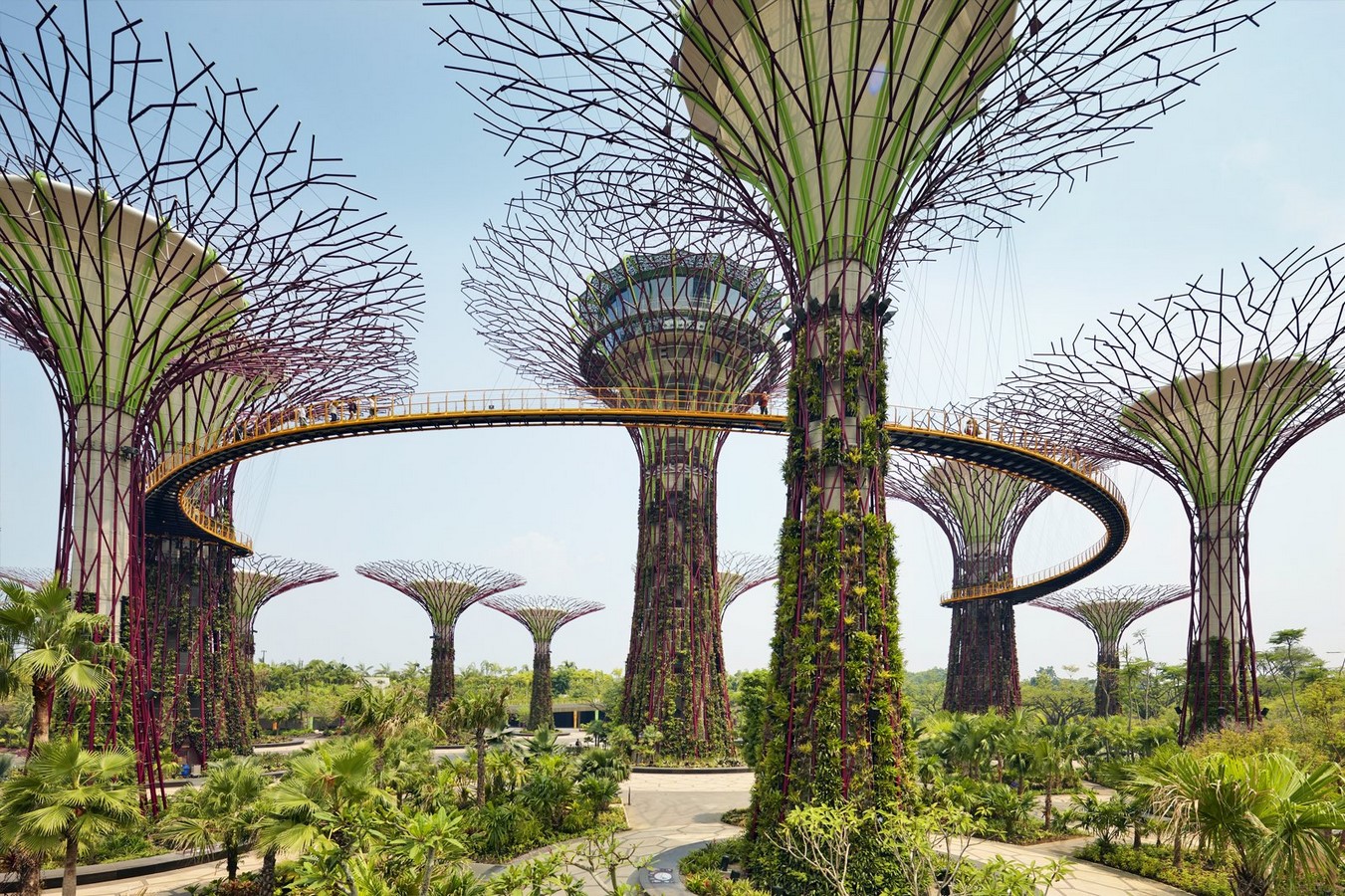
9. Which One of the Green Facade Is the Largest in the United States

Gardenhouse designed by MAD Architects is a mixed-use complex with a commercial ground floor and residential spaces above. The building is based on a square shape with an internal atrium. The main point of the facade is one of the largest green living walls in the USA covered with succulents with a big tolerance for drought.
The green wall is situated on the external side of the complex and creates an interesting street facade. The residential white units look like they are growing out from the green part which has to remind the hilly landscape.
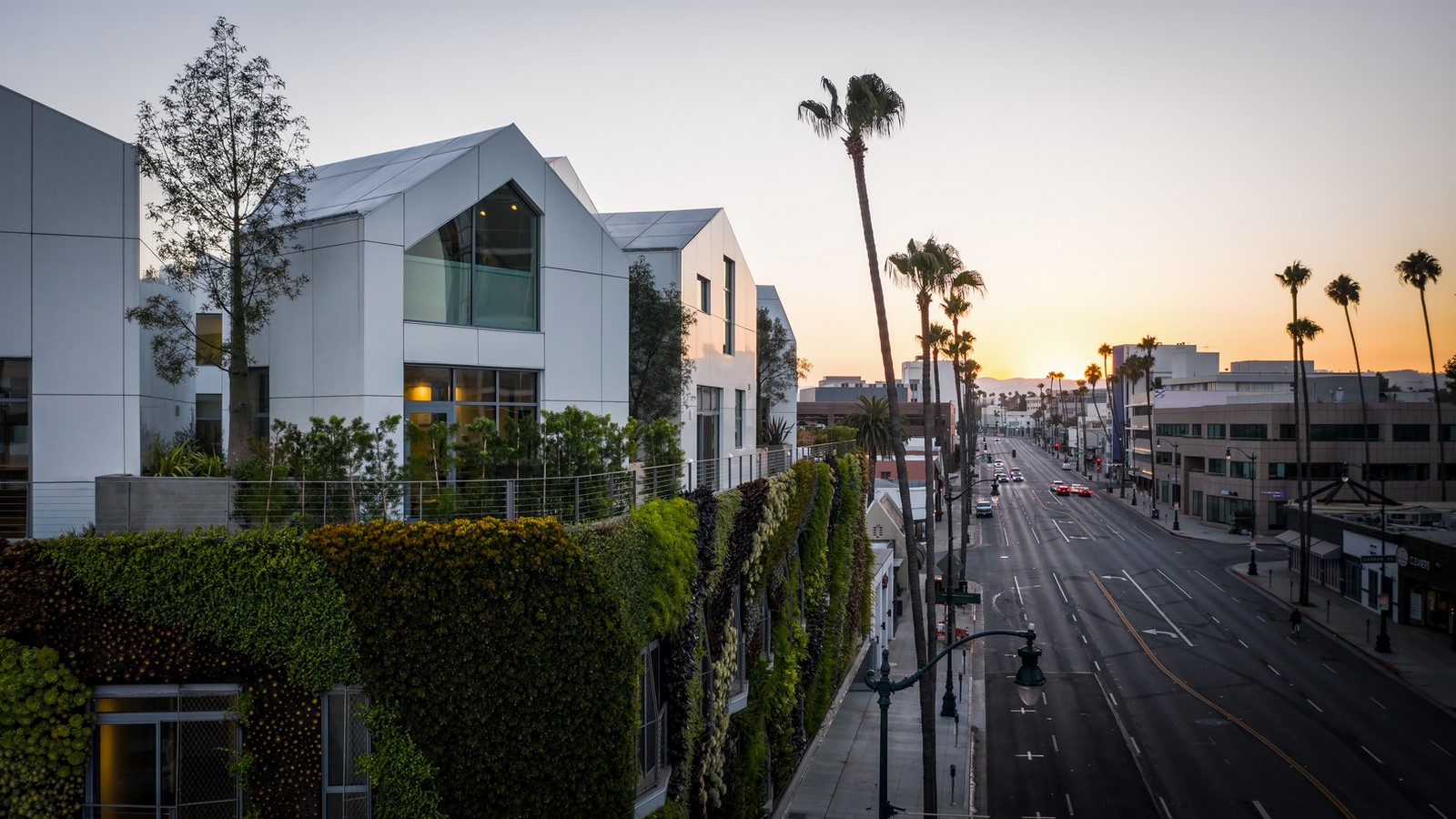
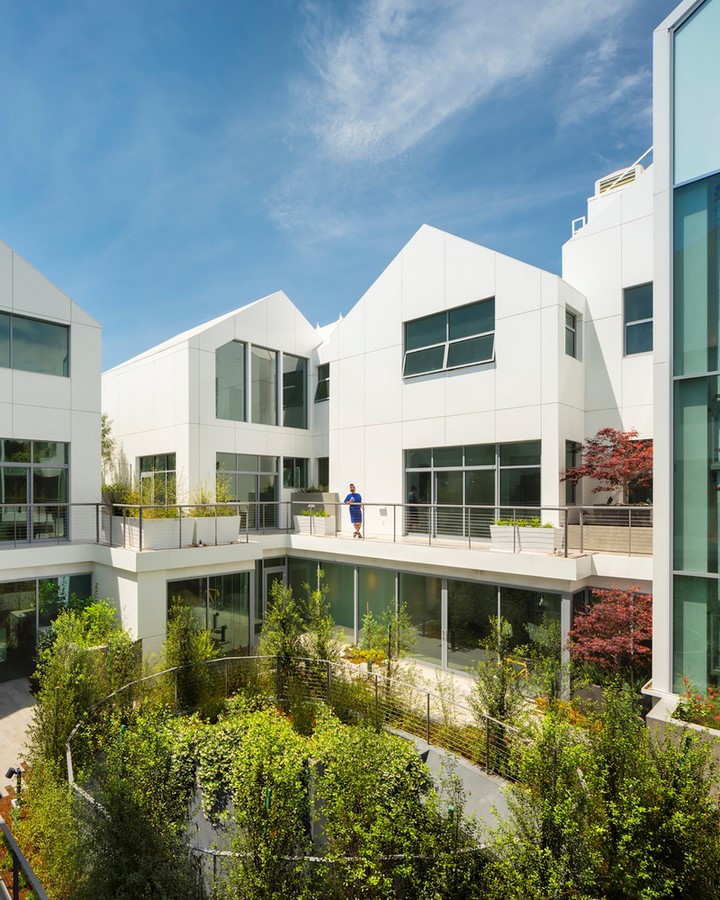
10. Where is the World Tallest Interior Living Garden | Green walls

This interior living installation located in the Lévis building in Quebec is said to be the tallest (or one the tallest if anything changed lastly) of existing green walls. Designed by Green Over Grey, the 65-metres wall is characterized by huge biological diversity and was aimed to show the company’s commitment to sustainable development.
The wall contains 42 plant species that are among others philodendrons and snake plants with different colours and sizes. All of them were planted in hydroponic panels of recycled materials.
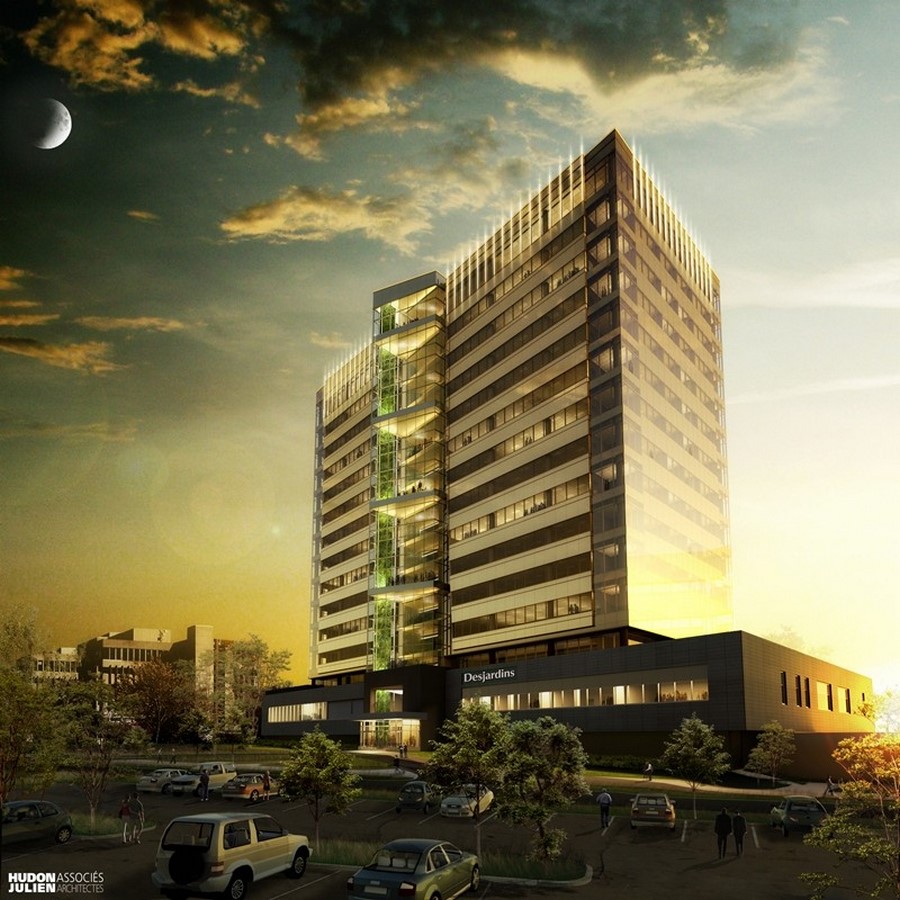

References:
Ujueta K. (2014). The New Way to Experience Nature, Symbiotik Walls. (e-book)
Stuart A., Lauzurique C.D. Sustainable design. Green roofs, walls and vertical gardens. (e-book)
Blog – Interior Vegetation. Interesting Domestic Plants That Are Perfect for a Green Wall. Available at: https://4naturesystem.com/blog-en/bid-44-domestic-plants-green-wall [Accessed date: 24/04/2021].


